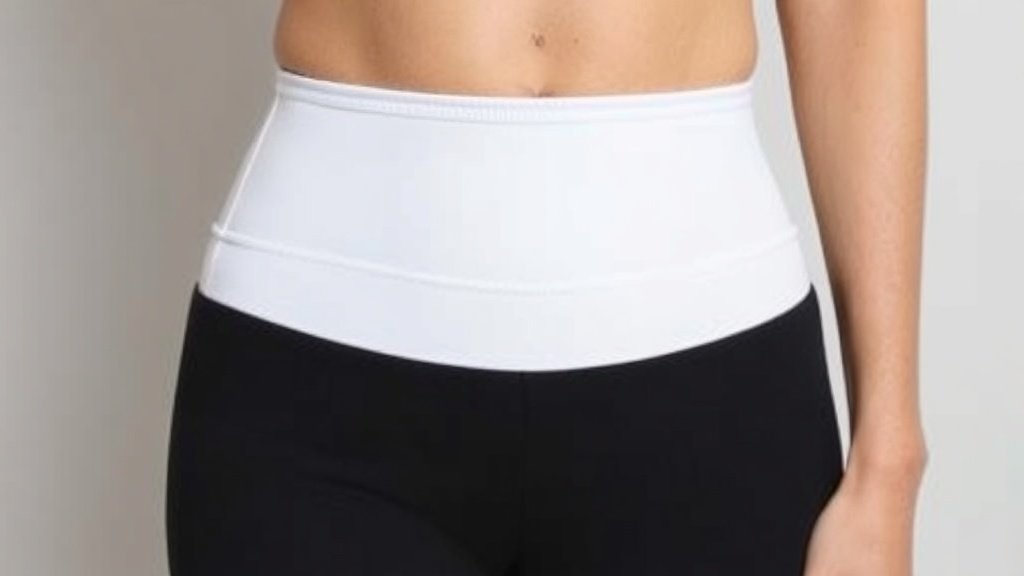Choosing the Right Compression Garment After a Tummy Tuck
After undergoing a tummy tuck, choosing the right compression garment is essential for your recovery and overall results. These garments provide support, help reduce swelling, and aid in the healing process. With so many options available, it’s important to know what to look for when selecting the perfect compression garment for your needs.
Understanding Compression Garments
Compression garments are specially designed clothing that applies pressure to the surgical area, promoting healing and reducing edema. After a tummy tuck, these garments help support the abdominal muscles and skin during the initial recovery phase. Wearing the correct garment can also help improve the overall aesthetic outcome of the surgery.
Factors to Consider When Choosing a Compression Garment
When selecting a compression garment, consider the following factors:
- Size: Ensure the garment fits snugly but is not overly tight. A proper fit will provide compression without causing discomfort.
- Material: Look for breathable fabrics that allow for airflow and moisture-wicking properties. This will help keep you comfortable and dry during the recovery period.
- Type: There are various types of compression garments available, including bodysuits, abdominal binders, and high-waisted shorts. Choose the one that suits your body type and provides the necessary support.
- Length of Wear: Your surgeon will provide a timeline for how long you should wear the garment. Ensure you can comfortably wear it for the entire duration recommended.
- Accessibility: Opt for garments that have easy access for bathroom needs or nursing if required. Zippers, hooks, and open-crotch designs can enhance convenience.
Types of Compression Garments Available
Several types of compression garments are suitable for women after a tummy tuck:
- Bodysuits: These provide full-body compression and support. They can help flatten the abdomen and ensure an even contour.
- Abdominal Binders: These are wraps that support the abdominal area. They do not cover the whole body and are typically adjustable for personalized fit.
- High-Waisted Compression Shorts: Ideal for those who prefer more coverage and support around the hips and thighs, these shorts help reduce swelling in those areas as well.
- Faja Garments: Popular in Latin American countries, Fajas provide extensive compression and are designed specifically for body sculpting purposes.
Post-Operative Instructions
After your tummy tuck, your surgeon will typically provide specific instructions on how to wear your compression garment:
- Wear the garment continuously for the first few weeks, removing it only when necessary.
- Follow the recommended wear time, which usually lasts several weeks to months.
- Monitor for any signs of irritation or discomfort, and report these concerns to your surgeon immediately.
- Wash your garment regularly to ensure hygiene and freshness during the recovery.
Benefits of Wearing a Compression Garment
Wearing a compression garment after a tummy tuck offers numerous advantages, including:
- Reduces swelling and bruising during the healing process.
- Helps support the abdominal muscles during early recovery stages.
- Improves blood circulation, which aids in faster healing.
- Promotes proper positioning of the skin during the healing process.
- Enhances overall comfort by reducing skin chafing during movement.
Recommendations
Before purchasing a compression garment, consult with your plastic surgeon for tailored advice. They may recommend specific brands based on their experience. For more information about choosing compression garments and post-operative care, you can visit The American Society of Plastic Surgeons or RealSelf.
| Type of Garment | Benefits | Best For |
|---|---|---|
| Bodysuits | Full-body compression, smooths contours | Overall support |
| Abdominal Binders | Localized support, adjustable fit | Targeted support |
| High-Waisted Shorts | Hip and thigh coverage, reduces swelling | Comfort and coverage |
| Faja Garments | Extensive compression, ideal for body sculpting | Cultural preferences, body contouring |
Choosing the right compression garment after a tummy tuck is crucial to ensure a successful recovery and achieve the desired results. It’s important to consider your unique needs and consult with your surgeon to make the best decision for your body. Remember, taking the time to select the right garment can significantly impact your comfort and healing progress.
The Benefits of Wearing Compression Garments Post-Surgery
Wearing compression garments after surgery offers a multitude of benefits that can significantly enhance recovery. Whether you are recovering from a tummy tuck, liposuction, or another procedure, these specially designed garments play a crucial role in your healing journey. Let’s delve into the key advantages and understand why compression garments are an essential part of post-operative care.
Enhanced Healing
One of the primary benefits of wearing compression garments is their ability to enhance healing. These garments help to support your body’s natural recovery processes. By applying consistent pressure on the surgical area, compression garments promote better blood circulation. This can lead to:
- Reduced swelling
- Minimized bruising
- Faster tissue repair
By keeping the swelling down, compression garments also help prevent complications such as seromas, which are fluid-filled pockets that can form post-surgery.
Improved Comfort
Post-surgical recovery can sometimes be uncomfortable. Compression garments, designed specifically for your needs, can provide a feeling of support, making it easier to move around. They can help to stabilize the surgical site and reduce discomfort by:
- Providing a snug fit to support the abdominal area
- Reducing movement of the skin and tissue during activity
This added layer of comfort can be especially important in the first few weeks after surgery when you might feel vulnerable and sensitive.
Better Results
Wearing a compression garment can also lead to improved cosmetic results. By applying consistent pressure, these garments encourage your skin to tighten and conform to your body’s new contours. This is particularly crucial after cosmetic procedures like tummy tucks, where maintaining a smooth and even appearance is desired. Key points include:
- Helps in shaping the abdomen
- Reduces the likelihood of irregular healing
- Encourages skin to adapt to new shapes
Many surgical patients have reported higher satisfaction with their results when they adhered to their post-operative compression regimen.
Prevention of complications
Compression garments also help reduce the risk of complications after surgery. By limiting excessive swelling and movement, these garments can help prevent conditions such as:
- Deep vein thrombosis (DVT)
- Infections due to fluid accumulation
- Excessive scarring
The risk of DVT is particularly concerning for patients after major surgeries. The right garment can support circulation and minimize this risk, allowing you to focus on your recovery without extra worries.
Choosing the Right Compression Garment
Selecting the correct garment is vital for maximizing the benefits of compression. Here are some tips:
| Feature | Considerations |
|---|---|
| Size | Ensure it fits snugly without being too tight. |
| Material | Opt for breathable, moisture-wicking fabrics that allow for comfort and hygiene. |
| Length | Select the length based on your specific surgery; full-body garments may be necessary for some. |
Consulting with your surgeon about the appropriate garment for your specific procedure can make a significant difference in your recovery experience.
Advice and Resources
For more information on recovery and compression garments, consider visiting The American Society of Plastic Surgeons or RealSelf. These sites provide valuable insights and professional advice to help you navigate your post-operative journey.
Wearing compression garments after surgery is not just a recommendation; it’s part of a well-rounded recovery plan. By understanding the many benefits and ensuring you choose the right garment, you are taking the necessary steps toward a successful recovery and optimal results. Remember, your comfort and wellbeing matter most during this critical healing phase.
Understanding Different Types of Compression Garments
After undergoing a tummy tuck, also known as abdominoplasty, wearing a compression garment is crucial for your recovery. Understanding the different types of compression garments available can help you choose the right one for you. Compression garments offer various benefits including reducing swelling, improving circulation, and providing support to the surgical area. Let’s explore the different types of compression garments that you can consider after your tummy tuck surgery.
Full-Body Compression Garments
Full-body compression garments are designed to provide uniform support to your torso and abdominal area. These garments cover your legs, abdomen, and often your chest, depending on the design.
- Benefits: They minimize movement and help to keep everything in place while you heal.
- Considerations: Look for adjustable straps for added comfort.
Abdominal Binders
Abdominal binders are specific to the stomach area, providing pressure to the abdomen post-surgery. They are often adjustable and can be easily worn under clothing.
- Benefits: Abdominal binders help to stabilize the abdominal muscles and reduce swelling.
- Types: Available in different widths and materials to suit individual needs.
Waist Trainers
While waist trainers might be trendy, it is important to differentiate them from the medical compression garments recommended after surgery. Unlike traditional waist trainers, which are designed for aesthetic purposes, medical-grade waist trainers offer the following:
- Firm Compression: Provides targeted support and can aid in the healing process.
- Breathable Material: Look for options that allow your skin to breathe while providing necessary support.
Panty Compression Garments
These garments resemble regular panties but come with added compression features. They create a snug fit around the abdomen while maintaining comfort.
- Fit: Ideal for women who prefer something less bulky and still need support after a tummy tuck.
- Benefits: They can often be worn discreetly under clothes, making them a popular choice.
Post-Operative Bodysuits
Post-operative bodysuits are a versatile option, providing coverage from chest to legs. They offer full support and often come with zippers or clasps for easy wear.
- Adjustability: Many come with adjustable features for comfort during healing.
- Materials: Look for lycra or spandex blends that provide firm support without irritation.
Choosing the Right Compression Garment
When selecting a compression garment after your tummy tuck, consider the following:
- Comfort: Make sure it fits well and doesn’t dig into your skin.
- Levels of Compression: Opt for something that provides enough pressure without being too tight.
- Material: Choose breathable fabrics that will not irritate your skin.
Frequently Asked Questions
| Question | Answer |
|---|---|
| How long should I wear a compression garment after surgery? | Typically, surgeons recommend wearing them for 6 to 8 weeks post-surgery. |
| Can I wear my compression garment while sleeping? | Yes, wearing it during sleep helps support healing. |
Always consult with your surgeon about the best options tailored for your situation. They can provide guidance on the type, size, and duration of use for compression garments. For additional information on post-surgery care and compression options, you can visit American Society of Plastic Surgeons or RealSelf.
Understanding the different types of compression garments available after a tummy tuck is key to ensuring a smooth recovery. Making an informed choice will aid in your healing process and enhance your overall comfort as you navigate through recovery.
Proper Care and Maintenance for Your Compression Garment
After undergoing surgery, particularly a tummy tuck, proper care and maintenance of your compression garment is essential for optimal recovery. These garments provide necessary support, help reduce swelling, and promote healing. Knowing how to care for your compression garment ensures that it remains effective and comfortable.
Understanding Your Compression Garment
Your compression garment should fit snugly but not be overly tight. It’s designed to provide consistent pressure to the abdominal area, promoting blood circulation and minimizing fluid buildup. Knowing how often to wear it and when to transition to regular clothing can significantly impact your recovery.
Daily Care Routine
Your compression garment should be part of your daily routine, especially in the early stages of recovery. Here’s a suggested daily care routine:
- Wear it Daily: Put on your garment first thing in the morning and wear it throughout the day.
- Check for Comfort: Ensure it fits comfortably without biting into your skin.
- Monitor for Hygiene: Regularly inspect the garment for any signs of wear, tear, or odor.
Washing Your Compression Garment
Keeping your compression garment clean is vital for skin health. Follow these steps for washing:
- Hand Wash: Gently hand wash your garment in cold water with mild detergent. Avoid harsh chemicals and fabric softeners.
- Rinse Thoroughly: Rinse until all soap is removed, as residual detergent can irritate your skin.
- Air Dry: Lay it flat or hang to dry. Never use a dryer, as heat can damage the fabric and alter its compression properties.
Frequency of Washing
To maintain hygiene and effectiveness, wash your compression garment after every 1-2 days of use, especially during the initial weeks following your tummy tuck. If you notice any stains or odors, it’s best to wash it immediately.
Storage Tips
When not in use, store your compression garment properly to preserve its elasticity:
- Keep it Flat: Store it flat in a cool, dry place to avoid creasing.
- Avoid Direct Sunlight: Sun exposure can degrade the fabric over time.
- Separate Storage: Keep it separate from other clothing items to prevent damage.
Replacing Your Compression Garment
Compression garments wear out over time. It is generally recommended to replace your garment every 6 weeks, depending on how frequently you wear it. Check for signs of loss of compression, such as:
- Distorted shape
- Excessive stretchiness
- Visible wear and tear
Consult Your Surgeon
Always stay in touch with your healthcare provider for personalized advice on your recovery journey. They can provide specific recommendations for your compression garments based on your surgery type and individual healing progress. For more resources and information, you can visit American Society of Plastic Surgeons.
: Importance of Proper Maintenance
Taking good care of your compression garment after a tummy tuck can make a significant difference in your recovery process. Following these guidelines will not only enhance your comfort but also ensure that your garment remains effective throughout your healing. Should you have prolonged concerns, do not hesitate to reach out to your medical professional for guidance.
For more detailed information on abdominal surgery recovery resources, refer to American College of Surgeons.
Common Mistakes to Avoid When Selecting Compression Wear
Choosing the right compression wear can greatly impact your recovery process after a tummy tuck. However, many individuals make common mistakes that can hinder their healing or lead to discomfort. Here are some essential considerations and pitfalls to avoid when selecting your compression garment.
Understanding Compression Levels
Compression garments come in various levels of pressure. One of the most common mistakes is not understanding the different compression levels:
- Low Compression: Offers minimal support, suitable for light activities.
- Medium Compression: Provides moderate support, ideal for daily activities post-surgery.
- High Compression: Offers maximum support, essential for the early stages of recovery.
It’s crucial to consult your surgeon or healthcare provider to identify which level of compression is best for your specific needs. Choosing a garment with the wrong compression can lead to complications or prolonged recovery.
Ignoring Size and Fit
Another frequent mistake is not selecting the right size. Compression wear should fit snugly but not restrict blood flow or cause pinching. Factors to consider include:
- Your waist and hip measurements
- Whether the garment has adjustable straps or closures
- Your body shape and any swelling that may occur post-surgery
It’s essential to refer to the manufacturer’s sizing guide and, if possible, try the garment on before purchase. A poorly fitted garment can lead to discomfort, impede circulation, and ultimately affect your healing process.
Overlooking Material Quality
Compression garments are made from various fabrics, and not all materials are created equal. Look for these qualities:
- Breathability: Fabrics that allow air circulation help prevent overheating and discomfort.
- Moisture-Wicking: This feature helps to keep the skin dry, reducing the risk of irritation.
- Elasticity and Durability: A good garment should maintain its shape even after multiple washes.
Choosing a lower-quality garment can lead to complications such as skin irritation or reduced effectiveness. Investing in a high-quality product is a crucial step in your recovery journey.
Timing of Wear
Wearing your compression garment at the wrong times can set back your recovery. Ideally, you should wear your compression garment as directed by your surgeon, which typically includes:
- Consistent wear during the first few weeks post-surgery
- Gradually transitioning to less compression as you heal
- Wearing the garment during physical activity or a return to routine
Forgetting to wear it as instructed can lead to delays in recovery and changes in your surgical results.
Neglecting Care Instructions
Maintaining the integrity of your compression garment is vital for ongoing effectiveness. Common mistakes include:
- Not following washing instructions, which can damage the fabric
- Using fabric softeners that can make the material less effective
- Ignoring signs of wear and tear, which can affect the garment’s compression capability
Always read and adhere to the care instructions provided by the manufacturer. Regularly check the condition of your garment to ensure it remains effective.
Failing to Consult Healthcare Professionals
One of the biggest mistakes individuals make is not consulting with their healthcare provider regarding their choice of compression wear. Make sure to:
- Ask your surgeon for recommendations on brands and styles
- Seek advice on when and how long to wear your garment
- Discuss any discomfort or issues you experience while wearing the garment
Your healthcare professional can provide tailored advice to ensure your recovery goes smoothly.
By being more informed about these common mistakes, you can make better choices when selecting compression wear after your tummy tuck. A well-chosen garment can support your healing, enhance comfort, and help you achieve your aesthetic goals post-surgery. For more in-depth information on compression wear, check out Drugwatch or RealSelf.
How Compression Garments Influence Recovery Time
When considering recovery after a tummy tuck, many people don’t realize how essential a compression garment can be. Compression garments play a vital role in recovery, helping to enhance healing processes and provide significant comfort following surgery. Understanding how these garments influence recovery time is crucial for anyone planning to undergo this procedure.
After a tummy tuck, you can expect swelling and bruising as your body heals. A well-fitted compression garment helps control this swelling, which can, in turn, aid in the overall healing process. By providing consistent pressure to the abdominal area, these garments limit fluid build-up while also supporting the skin and underlying tissues as they heal.
Many patients often wonder what type of compression garment is best suited for their recovery. Here are several key factors to consider:
- Fit: The garment should fit snugly but not be overly tight. A proper fit will provide the necessary compression without causing discomfort.
- Material: Opt for breathable and moisture-wicking fabrics that prevent irritation and promote comfort during the recovery period.
- Length: Choose a garment that covers the entire abdominal area and fits below the waist. This ensures full support and avoids excess movement that could disrupt healing.
- Type: There are various styles of compression garments available, including shorts, bodysuits, and abdominal binders. Your surgeon can recommend the best option based on your needs.
One of the most significant ways compression garments influence recovery time is by controlling swelling. When postoperative swelling is kept in check, patients often experience less discomfort, which can motivate them to resume normal activities more quickly. Reduced swelling also leads to a more defined abdominal contour earlier in the healing process, which can help boost your morale and overall satisfaction with the procedure.
Additionally, compression garments provide essential support to your abdominal muscles, which may feel weak or strained following surgery. This support aids in movement, making it easier to perform light activities as recommended by your healthcare provider. You’ll likely find that having your abdominal area secured accelerates your overall sense of well-being and can lead to faster recovery times.
It’s also important to wear your compression garment for the entire duration recommended by your surgeon. This period may range from a few weeks to several months, depending on your individual healing process. Consistent wear ensures that your body remains supported as it heals while maximizing the benefits of compression.
Here is a brief table summarizing what to look for in a compression garment:
| Factor | Recommendation |
|---|---|
| Fit | Snug but not too tight |
| Material | Breathable, moisture-wicking fabrics |
| Length | Covers abdomen and fits below the waist |
| Type | Shorts, bodysuits, or abdominal binders |
Many patients experience improved mobility, reduced pain, and a greater sense of security when using their compression garments. This can lead to an accelerated return to daily activities, allowing for more significant engagement with life sooner rather than later. Over time, the psychological boost from seeing positive physical changes can also contribute to your overall healing journey.
In seeking compression garments for your recovery, some reliable sources include Underworks, which offers a wide variety of post-surgery compression garments, or Vedette for body shaping options specifically designed for recovery after surgical procedures.
The choice of compression garment and its proper usage can greatly influence your recovery time after a tummy tuck. By understanding the impact of compression on healing, you can make informed decisions and pave the way for a smoother recovery process.
Tips for Comfort and Fit While Wearing Compression Garments
Wearing the right compression garment after surgery is essential for comfort and recovery. Whether you’ve had a tummy tuck, liposuction, or any other procedure, the fit and comfort of your garment can significantly impact your healing process. Here are some tips to ensure you feel your best while wearing compression garments.
Choose the Right Size
Getting the correct size for your compression garment is crucial. An improperly fitting garment can cause discomfort and hinder proper healing. Check the sizing chart provided by the manufacturer before making a purchase. Here’s how to find your perfect fit:
- Measure your waist and hips at the largest point.
- Refer to the brand’s sizing chart to select the size that fits your measurements.
- When trying on, ensure the garment is snug but not painfully tight.
Select a Suitable Material
The fabric of your compression garment plays a vital role in your comfort. Look for materials that are breathable, soft, and stretchy. Common options include:
- Nylon: Offers a good combination of stretch and support.
- Spandex: Provides excellent elasticity and comfortable compression.
- Cotton blends: Offers breathability with a softer feel against the skin.
Look for Adjustable Features
An adjustable compression garment can enhance comfort as your body changes during recovery. Consider garments that come with:
- Hook-and-eye closures for flexible fitting.
- Adjustable straps to accommodate swelling.
- Customizable lengths in legs or sleeves when applicable.
Make a Gradual Transition
After your surgery, you may not be used to wearing a compression garment. Start by wearing it for shorter periods and gradually increase the duration. This helps your body adjust without feeling overwhelmed. Follow your surgeon’s guidelines to ensure you wear it for the recommended amount of time each day.
Layer for Comfort
If the garment feels too tight or chafes against your skin, consider wearing a soft, moisture-wicking layer underneath. This can help reduce friction and make wearing the garment more pleasant. Here are some layering tips:
- Choose a tank top or undershirt that fits snugly.
- Avoid garments with seams that could dig into your skin.
- Opt for seamless options for a smoother feel.
Maintain Hygiene
Keeping your compression garment clean is essential for both comfort and recovery. Wash your garment according to the manufacturer’s instructions. In general, consider these practices:
- Use a gentle detergent to reduce irritation.
- Hand wash or use a delicate cycle in the washing machine.
- Air dry instead of using a dryer to maintain elasticity.
Be Mindful of Your Activities
While wearing your compression garment, it’s essential to choose activities that won’t strain your body or the garment. Avoid high-impact activities until you have fully healed, as this could lead to discomfort or complications. Here are some suitable activities:
- Gentle walking to promote circulation.
- Light stretching to maintain mobility.
- Gradual reintroduction of normal daily tasks.
Consult with Your Surgeon
If you experience any pain or discomfort while wearing the garment, reach out to your surgeon. They can guide you on the best practices tailored to your specific needs. Your comfort is directly linked to your recovery, so don’t hesitate to ask for help if needed.
For more personalized advice and high-quality compression garments, consider visiting American Medical Supply or Compression Garment. They offer a variety of options to ensure you find the right fit for your recovery journey.
With the right compression garment, you’ll enhance your healing process, feel comfortable, and support your body in recovering effectively after your tummy tuck. Remember to prioritize comfort and fit, and your body will thank you as you progress towards your post-operative goals.
Key Takeaway:
When considering recovery after a tummy tuck, selecting the right compression garment is vital for a smooth healing process. The garment you choose plays a central role in supporting your recovery journey, ensuring optimal results while minimizing discomfort. Here’s a comprehensive takeaway from our exploration of compression garments post-surgery.
First, it’s crucial to choose the correct compression garment specifically designed for tummy tuck patients. These garments provide the necessary support to the abdominal area while promoting adequate blood circulation. Look for garments that are comfortable, breathable, and feature adjustable straps to ensure a perfect fit. The benefits are multifold; wearing a compression garment not only reduces swelling and bruising but also helps contour your new shape.
Understanding the different types of compression garments available can help you make an informed choice. Options range from abdominal binders to full-body compression garments, each offering varying levels of support. Selecting one that meets your specific needs can significantly enhance your recovery experience.
Proper care and maintenance of your compression garment are equally important. Regular washing and fabric care can extend its life and effectiveness, ensuring that it remains hygienic and comfortable to wear. Avoiding common mistakes, such as choosing the wrong size or material, can also aid in a smoother recovery. It’s essential to get fitted correctly and follow your surgeon’s recommendations to prevent complications.
Moreover, compression garments greatly influence your recovery time. By wearing them consistently, you can encourage faster healing, as they help to reduce fluid retention and provide abdominal support. For maximum comfort, make sure that your garment fits snugly but not too tight, allowing for natural movements without compromising pressure.
The right compression garment enhances your tummy tuck recovery by supporting your body and reshaping your contours while preventing complications. Taking time to choose wisely, care for your garment, and ensure a proper fit can lead you to a faster, more comfortable recovery. Implementing these strategies can result in a successful healing process, allowing you to enjoy your new look with confidence. Your journey doesn’t end at the surgery; your choice of compression wear is an essential step towards achieving your desired results.
Conclusion
Selecting the appropriate compression garment after a tummy tuck is crucial for your recovery journey. By understanding the different types of compression wear, you can choose a garment that provides the necessary support while promoting healing. Wearing a compression garment not only alleviates discomfort but also minimizes swelling and helps your skin adhere to your new contours, ultimately expediting the healing process.
It’s essential to prioritize proper care and maintenance of your compression garment to ensure it lasts throughout your recovery. Be mindful of common mistakes when selecting your garment, such as choosing incorrect sizes or materials that may irritate your skin. These errors can hinder your recovery and lead to complications that could have been easily avoided.
While wearing compression garments, comfort and fit should always be considered. Make sure the garment is snug but not overly restrictive, so it supports your abdomen without causing discomfort. Adjusting the straps or seeking the right fabric can help enhance your experience.
Remember, your body needs time and resources to heal effectively. The right compression garment will act as an ally during this crucial phase, allowing you to focus on your recovery. By following these guidelines and recommendations, you’ll be well on your way to a successful and smoother recovery after your tummy tuck. Embrace this journey, and trust that the proper compression wear will support you every step of the way.






Leave a Reply